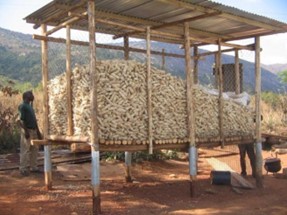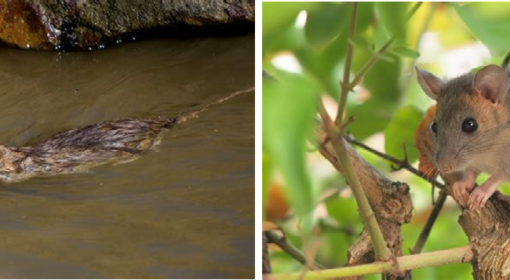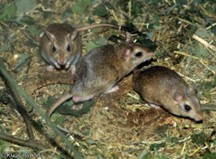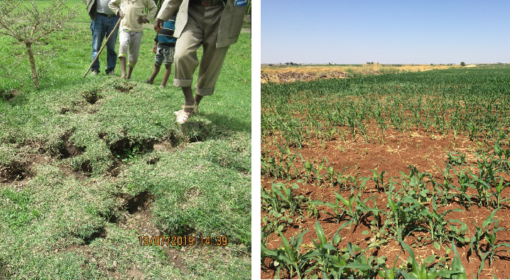Authors: Anushree Mitra and Luwieke Bosma
Rodents, mainly rats and mice, have been a common enemy of farmers across the world. Rodents play a vital role in the ecosystem, they are a food source for numerous predators, they encourage the growth of new plants and trees by dispersing seeds, and the burrows they dig loosen up the soil, promoting better air circulation and water filtration. However, the problem lies in their numbers. Rodents reproduce thus fast that from 1 pair, 800-1200 offspring can come in only 1 year. Moreover, they adapt very well to human lifestyle and thrive abundantly when food and shelter is available to them. This is where the balance in the ecosystem is overturned by rodents and they become a pest species, greatly compromising quantity and quality of food crops.
By the farmers in Madhya Pradesh they have been identified as one of the biggest destructive forces when it comes to agricultural lands. Not only do rats eat the agricultural produce directly, they also hoard more than they eat, storing this in their burrows. Furthermore, the habit of rodents to gnaw, leads to the fact that they also gnaw items which they won’t eat, but only damage. Lastly, many stored crops are spoiled because rodents contaminate it, e.g. through their droppings and urine.
In the tribal areas of Madhya Pradesh in India, we have identified that rats can damage up to 25% of the agricultural yields, especially during storage. Not only agricultural produce but they are known to cut cables, wires, destroy walls, clothes, etc. On top of these economic losses, rats threaten farmers health.
Farmers furthermore indicate that rodent populations have increased over the last few decades. The reasons shared by farmers are threefold: 1) just like humans, rats reproduce and populations keep growing, it is a natural phenomenon, 2) people in this area used to do millets (kodo and kutki), but now mainly doing maize and rice, with bunds in the fields separating the fields and allowing for basin irrigation. This has attracted more rodents since there is more food and better shelter, and 3) food production overall has increased, it is now not only for subsistence, but surplus is also sold, this means there is also more food for rats.
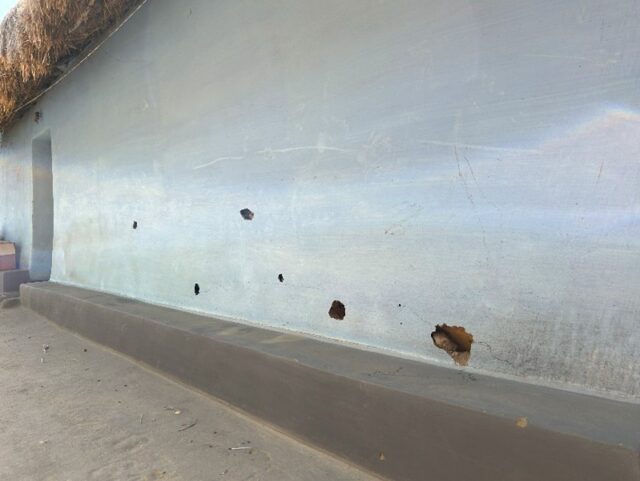
Now we come to the question, “what is the solution?” This is not easy to answer, but we invite you to take a look at the following traditional methods that are followed by the tribal communities in the states of Madhya Pradesh and Jharkhand. These traditional methods are built upon a deep understanding of nature and the behaviour of rats and other predator animals. Here are six examples:
1. The smoking burrow method– The farmers take a clay pot and make a small hole beneath the pot. Then they fill it with straw; preferably of the local millets (kodo and kutki), as it is believed that the smoke of millet-straw produces a pungent smell which is also toxic. If millet is not available, they use rice straw. Next, they go the fields and start identifying large and active rat burrows. After selecting the burrow, they start digging to ensure the clay pot can fit well (see Figure 1). The other burrow openings are covered. The farmers then light up the dry straws, dried cow dung and put in inside the clay pot. Once it is burnt, they seal the burrow with the clay pot and start blowing smoke from the small hole made at the end of the pot. People are then on the lookout for the rats. The poisonous smoke starts filling up in the holes and the rats start coming out from the burrows and the people catch and kill them. They use whatever is around them like sticks or stones to kill the rats. Sometimes, the rats manage to escape as well. At one go the people have managed to catch and kill 40 to50 rats, where on average 15-25 rats can be caught. This is a community activity and requires at least 6-10 people.

2. The drowning method– The farmers first identify the rat burrows and its openings and then close all the other openings, similarly to the smoking burrow method, as rats are very clever and dig more than one exit for them to escape. The farmers then start filling water through that burrow and flood it. The water also weakens and breaks the soil inside the burrows. The rats then dig other exits and the people who are on the lookout for them, catch and kill the rats. They use whatever is around them like sticks or stones to kill the rats. Sometimes, the rats manage to escape as well.

3. The perching method: This method is not as labour intensive as the above drowning and smoking method, mentioned earlier. Farmers either place sticks in regular intervals in their fields or place poles and tie a rope from one end to the other. These help predator birds, such as eagles, in the day and owls at night to hunt for rats. Note: the perching pole can best be 3m high, with a 30cm bar on top, in a T-shape.
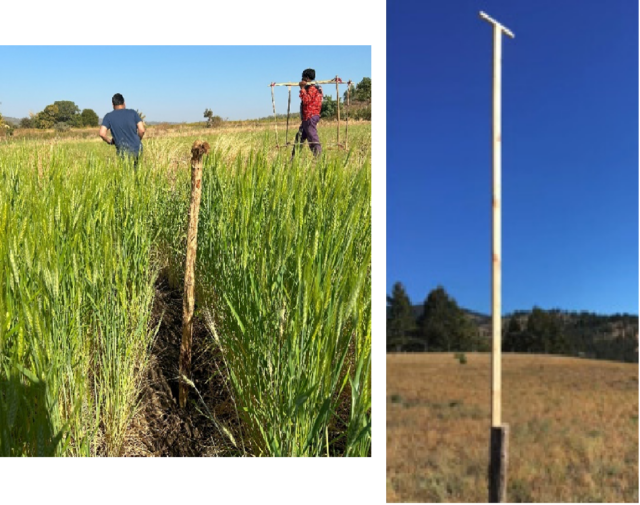
4. Scare-snake- Some farmers have found a unique way to scare rats. They shape sticks in the shape of snakes and place them in their fields, close to rat runways or burrow openings. Since snakes are their enemies, this scares the rats away. This method however is very short-lived, generally it is not effective as rats quickly understand they don’t need to fear the stick.
5. Pets- Farmers also keep cats and dogs at their houses for them to hunt and kill the rats.
6. Churning method – one farmer shares he would put some small amount of rice in a drum used to store food, see Figure 3 , then the rats all come and they fall inside the drum and can’t get out. That’s how he traps and kills them.
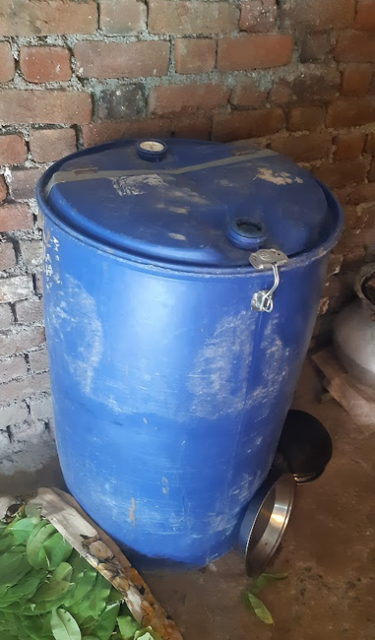
7. Smoking. To protect their maize seeds, farmers hang it above the stove, as the smoke that rises from the stove gives the maize a bitter taste and it is said that the smoke irritates the rats. Thus protecting their maize to be sown in the next year.

These traditional methods have varied success, the methods of smoking or flooding the burrows requires good time and cooperation, currently they are only practiced by few people who have learned it from their parents and grandparents. Some other methods are invented locally, such as the ‘churning’ method in which rats are trapped in a drum, or the perching method, which is also acclaimed scientifically. It shows the adaptability of locals in using new items and methods. Though farmers still stress the difficulty of managing high rodent infestations. This is mainly because most of the methods in use are reactive, instead of preventative in nature.
Preventative measures focus more on denying rats access to food and habitat reduction, where killing is only the last resort. Examples of preventative measures include: i) line sowing / keeping an open strip of land, this establishes a sense of fear in rats, as the openness exposes them to predators, they hence are reluctant to cross such open space, greatly impairing their mobility, hence options to get food; ii) planting a crop in a cluster of farmers at the same time, this shortens the time that rats have access to food as the time when crops are in the field is reduced; iii) proper maintenance, weeding and cleaning of the field, especially after the harvest removing all grain spillage and left-overs, thus denying rats to take this as food, and iv) narrowing the size of the bunds to 30cm in width and keeping them clean, this makes it more difficult for rats to take shelter in the bunds. Such measures are all focused on discouraging rats to settle in a place or move around for food, thus limiting their numbers.
In an age where there is so much focus on enhancing agriculture as a means of livelihood, it is of great importance to also save the crops one produces. Learning from traditional methods and incorporating forgotten crops, together with scientific research and development need to be put to the task together to create ecologically sustainable solutions.
Watch this video on EBRM or this open webinar recording if you want to learn more.
And you can always have a look at www.rodentgreen.com for more information.
Or reach out to: Luwieke (lbosma@metameta.nl) or Anushree (amitra@metameta.nl)

